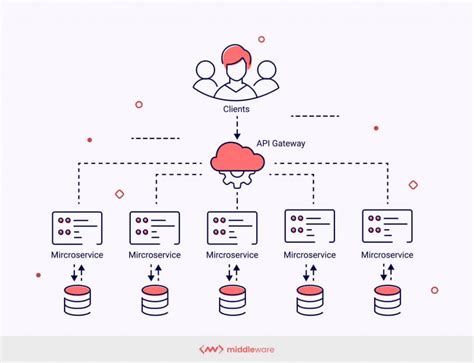In today's fast-paced digital landscape, businesses are constantly seeking innovative ways to stay ahead of the competition. One approach that has gained significant attention in recent years is the adoption of a headless tech stack. By separating the front-end presentation layer from the back-end infrastructure, organizations can achieve greater flexibility, scalability, and efficiency. In this article, we will explore five ways to build a headless tech stack, highlighting the benefits and considerations for each approach.
What is a Headless Tech Stack?
Before diving into the ways to build a headless tech stack, let's first define what it is. A headless tech stack refers to an architecture where the front-end presentation layer (the "head") is decoupled from the back-end infrastructure (the "body"). This separation allows for greater flexibility and scalability, as the front-end and back-end can be developed, deployed, and maintained independently.
1. Microservices Architecture
One way to build a headless tech stack is to adopt a microservices architecture. In this approach, the back-end is broken down into smaller, independent services that communicate with each other through APIs. Each service is responsible for a specific function, such as authentication, payment processing, or data storage. The front-end can then be built on top of these services, using APIs to interact with the back-end.

Benefits:
- Greater scalability and flexibility
- Easier maintenance and updates
- Improved fault tolerance
Considerations:
- Increased complexity
- Higher upfront costs
- Requires a high degree of technical expertise
2. Serverless Computing
Another way to build a headless tech stack is to adopt serverless computing. In this approach, the back-end is built using cloud-based services that can scale automatically to meet changing demands. The front-end can then be built on top of these services, using APIs to interact with the back-end.

Benefits:
- Reduced costs
- Increased scalability
- Improved reliability
Considerations:
- Limited control over infrastructure
- Vendor lock-in
- Requires a high degree of technical expertise
3. Containerization
Containerization is another approach to building a headless tech stack. In this approach, the back-end is broken down into smaller, independent containers that can be easily deployed and managed. The front-end can then be built on top of these containers, using APIs to interact with the back-end.

Benefits:
- Improved portability
- Increased efficiency
- Simplified deployment
Considerations:
- Increased complexity
- Requires a high degree of technical expertise
- Limited scalability
4. API-First Development
API-first development is an approach to building a headless tech stack where the API is designed and built first, and then the front-end is built on top of it. This approach allows for greater flexibility and scalability, as the front-end and back-end can be developed independently.

Benefits:
- Greater flexibility and scalability
- Improved maintainability
- Simplified development
Considerations:
- Requires a high degree of technical expertise
- Increased complexity
- Limited control over infrastructure
5. Jamstack
Jamstack is a modern approach to building a headless tech stack that emphasizes speed, security, and scalability. In this approach, the front-end is built using static site generators, and the back-end is built using cloud-based services. The front-end and back-end are then connected using APIs.

Benefits:
- Improved performance
- Increased security
- Simplified development
Considerations:
- Limited control over infrastructure
- Requires a high degree of technical expertise
- Increased complexity
Gallery of Headless Tech Stack Examples






FAQs
What is a headless tech stack?
+A headless tech stack refers to an architecture where the front-end presentation layer is decoupled from the back-end infrastructure.
What are the benefits of a headless tech stack?
+The benefits of a headless tech stack include greater flexibility, scalability, and efficiency.
How do I build a headless tech stack?
+There are several ways to build a headless tech stack, including microservices architecture, serverless computing, containerization, API-first development, and Jamstack.
In conclusion, building a headless tech stack can be a game-changer for businesses looking to improve their flexibility, scalability, and efficiency. By decoupling the front-end presentation layer from the back-end infrastructure, organizations can achieve greater control over their technology stack and improve their overall competitiveness. Whether you choose to adopt microservices architecture, serverless computing, containerization, API-first development, or Jamstack, the key is to find the approach that works best for your business needs.
